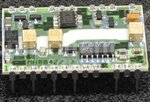igeorge
Member level 5

I would like to be able to sense when a phone line rings, simulate like i pickup the phone and send a digital 400 bytes message on the line, then hang up.
The message will be stored on a PIC controller.
I do not have a clue where to start reading so i can interface the microprocessor with the telephone line.
And also, how to detect when the phone ring and simulate pick up the phone.
Please help me with some directions where to start.
Thank you.
The message will be stored on a PIC controller.
I do not have a clue where to start reading so i can interface the microprocessor with the telephone line.
And also, how to detect when the phone ring and simulate pick up the phone.
Please help me with some directions where to start.
Thank you.



